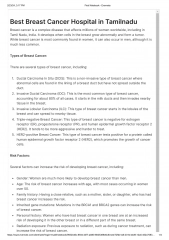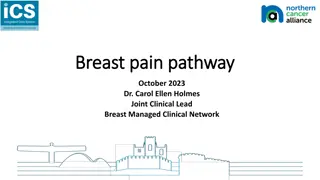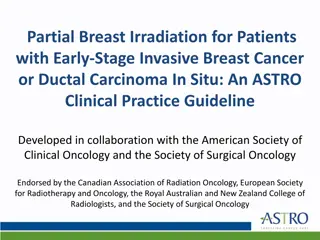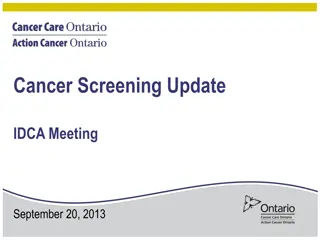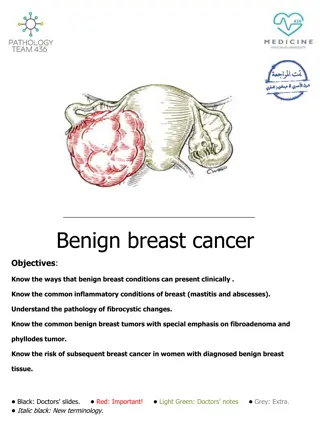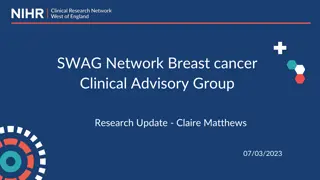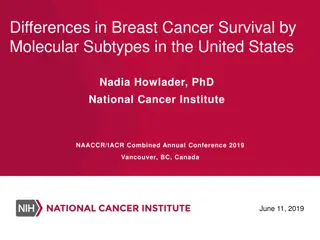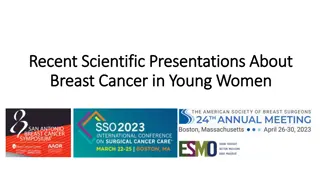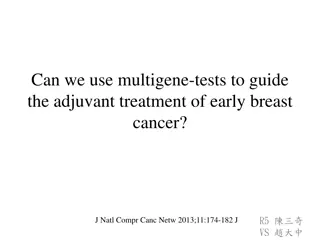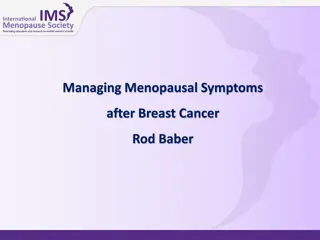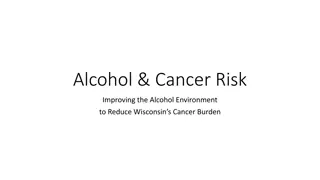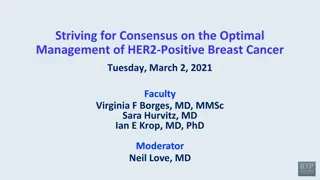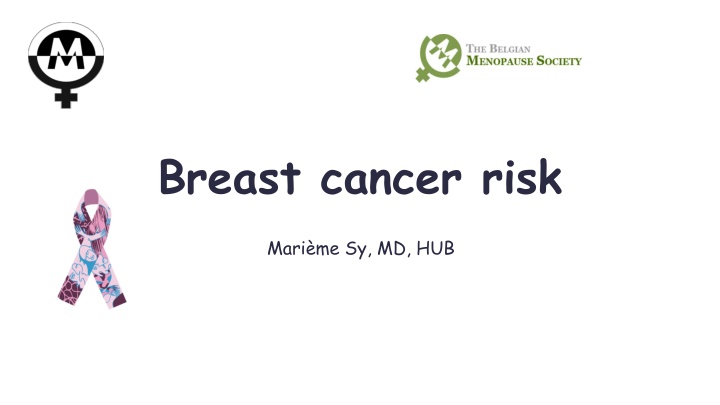
Breast Cancer Risk Factors and Management Strategies 2022-2026
Explore the various risk factors associated with breast cancer, including age, family history, thoracic irradiation, and breast density. Learn about the strategic plans for managing breast cancer risks in the coming years.
Download Presentation

Please find below an Image/Link to download the presentation.
The content on the website is provided AS IS for your information and personal use only. It may not be sold, licensed, or shared on other websites without obtaining consent from the author. If you encounter any issues during the download, it is possible that the publisher has removed the file from their server.
You are allowed to download the files provided on this website for personal or commercial use, subject to the condition that they are used lawfully. All files are the property of their respective owners.
The content on the website is provided AS IS for your information and personal use only. It may not be sold, licensed, or shared on other websites without obtaining consent from the author.
E N D
Presentation Transcript
Breast cancer risk Mari me Sy, MD, HUB 1 Plan strat gique 2022-2026
Breast cancer risk factors A number of risk factors for breast cancer have been identified: Age: the main risk factor since the incidence of this cancer has an age-dependent curve, increasing steadily from the age of 45. Family history of breast cancer: second main risk factor. 3 questions to ask: how many, who, when? In the 2 branches of the family, as genetic mutations are transmitted in an autosomal dominant fashion. Personal history of thoracic irradiation before the age of 30: the level of risk after thoracic irradiation is equivalent to that of a woman with BRCA1 mutation. Personal history of borderline lesions: Atypical ductal hyperplasia, atypical lobular hyperplasia, lobular carcinoma in situ. 2 Plan strat gique 2022-2026
Breast cancer risk factors Breast density: Multifactorial: genetic, biological, hormonal and societal (lifestyle). Independent and significant breast cancer risk factor. All mammography reports must specify the degree of breast density and clearly inform women with dense breast of the benefits of additional screening tests (1). Mac Cormack et al in 2006: the average relative risk (RR) of the density category above 75p. 100(ACR s type D) is 4.64 (95% CI: 3.64-5.91). Cummings et al meta-analysis (2009): RR=4.20 (95% CI: 3.61-4.89) compared with a density category of less than 5p. 100. Difficult to quantify precisely breast density. To harmonize the language used by radiologists, the American College of Radiology (ACR) has proposed a classification of breast density which includes 4 types: A: 25% of glandular tissue B: 25 to 50% of glandular tissue C: 50 to 75% of glandular tissue D: >75% of glandular tissue Mac Cormac VA, Dos Santos Silva I et al ,Cancer Epidemiol Biomarkers Prev 2006 Cummngs SR et al: J Natl Cancer Inst, 2009 3 Plan strat gique 2022-2026
B D A C Scattered area of fibroglanular tissue Almost entirely fatty Heterogenously dense Dense BI-RADS (Breast Imaging Reporting and Data System) classification of breast density of the ACR 4 Plan strat gique 2022-2026
5 Plan strat gique 2022-2026
Breast cancer risk Women should be counseled that life style factors influence the breast cancer risk (post-menopausal obesity and alcohol intake increase it and physical exercise decreases it) (level 1b evidence). Screening for breast cancer should occur, at the same frequency, whether or not women are using MHT after informed consent considering pro and con s of screening. Some regimens (EPT) increase mammographic density. In women with a high baseline mammographic density, regimens not increasing mammographic density should be favoured such as (TSEC, SERMS, ET, tibolone, and low dose EPT). .
Breast cancer risk factors Menopausal hormone therapy (MHT) Most effective treatment for vasomotor symptoms in menopausal women. The influence of menopause hormone therapy (MHT) on breast cancer incidence is still controversial. The first Women s Health Initiative (WHI) publication (2002) has considerably modified the prescription of oestrogens and progesterone in menopausal women. Discordant findings between results of prospective observationnal studies and randomized clinical trials. Long-term follow-up study of 2 randomized trials have shown:. Prior randomized use of CEE alone, compared with placebo, among women who had a previous hysterectomy, was significantly associated with lower breast cancer incidence and lower breast cancer mortality. Whereas prior randomized use of CEE plus MPA, compared with placebo, among women who had an intact uterus, was significantly associated with a higher breast cancer incidence but no significant difference in breast cancer mortality. Chlebowski et al JAMA July 2020 7 Plan strat gique 2022-2026
Breast cancer risk factors Association of Menopausal Hormone Therapy With Breast Cancer Incidence and Mortality During Long-term Follow-up of the Women's Health Initiative Randomized Clinical Trials Statistically significant lower breast cancer incidence No significant difference in breast cancer mortality Association with lower breast cancer incidence greater among women without first degree relative and no previous breast biopsy Association with lower risk strongest for ER+, PR- cancers Stronger associations with CEE-alone and breast cancer incidence seen for HER2+ and negative lymph node Chlebowski et al JAMA July 2020 8 Plan strat gique 2022-2026
Breast cancer risk factors Association of Menopausal Hormone Therapy With Breast Cancer Incidence and Mortality During Long-term Follow-up of the Women's Health Initiative Randomized Clinical Trials Higher incidence became statiscally significant in year 6 and remains significant Cancer diagnosed at higher stage with lymph node involvement No significant difference in breast cancer mortality Chlebowski et al JAMA July 2020 9 Plan strat gique 2022-2026
Breast cancer risk factors JE Manson, AM Kaunitz N Engl J Med 2016 10 Plan strat gique 2022-2026
Breast cancer risk EPT: Randomized data using one regimen (CEE+MPA) of EPT show an increased risk of breast cancer beyond 5 years of use (WHI) (level 1b of evidence). This means for example using the WHI data, that in a cohort of 1000 postmenopausal women aged 50-59 years, using EPT the calculated attributable risk of BC is 0.6 cases / 1000 women-year, without increased mortality. This is likely, associated with a proliferation of already preexisting tumors, rather than an induction of tumors. This additional risk is comparable to that of some life style factors. Sequential EPT as well as tibolone, and TSEC may entail lower risk than continuous combined regimens (LIFT) (level 1b evidence).
Breast cancer risk ET: Standard ET doses, decreased breast cancer incidence in some prospective randomised studies, as well as breast cancer related mortality (WHI, DOPS) (level 2a of evidence),but not in all. The addition of a progestin is not indicated in hysterectomised women.
Breast cancer risk factors Studies have found that MHT with estrogen in combination with synthetic progestins (medroxyprogesteroneacetat, norethisterone, levonorgestrel and norgestrel) is associated with a greater risk of breast cancer. In contrast, MHT consisting of estrogen in combination with micronized progesterone may have a lower risk of breast cancer. Estrogen, either bioidentical or animal-derived does not appear to be independently associated with an increase risk of breast cancer. Fournier A et alInt J Cancer 2005 Asi net al Syst Rev 2016 Haim AA et al Obstet Gynecol 2022 13 Plan strat gique 2022-2026
Menopause management of breast cancer patients MHT and tibolone are contra-indicated in breast cancer patients (level 1b). Hot flushes can be relieved in some patients with clonidine, venlafaxin and GABA-pentin (level 2a). Some SSRIs lower tamoxifen/endoxifen levels but whether it interferes with its efficacy is controversial. Oxybutidine and other anti-cholinergica have been also used, although these drugs may increase cognitive problems. NK3 antagonists may be a future alternative for such patients. In hormone-dependent breast cancer patients suffering from vaginal atrophy on aromatase inhibitors, topical non hormonal products should be administered before using topical hormone therapy. If needed, estriol should be preferred (Level 3).
Thank you for your attention 15 Plan strat gique 2022-2026
16 Plan strat gique 2022-2026

